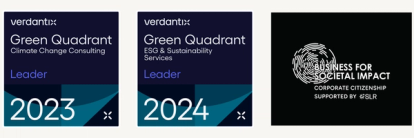
Understanding sound flanking: Fire alarm speaker cable conduits in multi-family buildings
by Neil Vyas
View post

The Safeguard Mechanism, originally introduced by the Australian Government in 2016, serves as a pivotal policy to curtail emissions from Australia's largest contributors. Recently reformed, this mechanism aligns with Australia's international commitment to decarbonisation.
As outlined below, the legislation establishes baselines, capping Scope 1 greenhouse gas (GHG) emissions from the covered facilities. These baselines are designed to progressively decrease, aligning with Australia's ambitious emission reduction targets: 43% below 2005 levels by 2030 and achieving net-zero emissions by 2050.
The Safeguard Mechanism applies to all facilities and organisations emitting 100,000 tonnes of carbon dioxide equivalent (tCO2-e) or more in direct emissions annually. Presently, over 210 facilities fall under this regulation, and will be tasked with keeping their emissions below the legislated baseline—a baseline that is set to progressively (4.9% p.a.) decline each year (the decline rate).
Facilities are assigned an annual intensity baseline, based on their operations, serving as the benchmark against which net emissions are evaluated.
A facility’s baseline emissions target is subject to annual adjustments based on production quantities reported under the National Greenhouse Energy Reporting (NGER) scheme. These adjustments are calculated by multiplying production variables[A] by their respective emissions-intensity numbers and the relevant decline rate.
For existing production variables at existing facilities, a hybrid emissions-intensity number is currently used. Initially weighted towards facility-specific values, this hybrid number gradually transitions to industry-average default values starting from 1 July, 2029[1].
New facilities, or new production variables at existing facilities, must use the international best-practice emissions-intensity number if applicable; otherwise, industry-average default values are applied.
Net emissions comprise covered emissions from the facility's operation, along with any Australian Carbon Credit Units (ACCUs) issued for abatement activities at the facility. This total is then adjusted by subtracting any ACCUs or Safeguard Mechanism Credits[B] (SMCs) surrendered for that year. Please note that SMCs only represent one tonne of carbon dioxide equivalent emissions, and they are not carbon offsets that can be used outside of the Safeguard Mechanism.
Facilities that are unable to meet their baseline emissions target will need to carry out one of the following in order to meet the legislative requirements.
Purchase Australian Carbon Credit Units (ACCUs) from the government at a fixed price of AU$75 in 2023-24, increasing with Consumer Price Index (CPI) plus 2% each year
Emissions-intensive, trade-exposed (EITE) facilities receive personalised treatment aligned with their comparative impact. These facilities fall into two categories: trade-exposed facilities, encompassing those with trade-exposed main production variables, and trade-exposed baseline adjusted (TEBA) facilities - a subset facing a higher risk of carbon leakage[C]. TEBA facilities have the option to apply for a discounted decline rate through the CER.
Our ESG Strategic Advisory and Air Quality teams have outlined a number of key facts that organisations need to consider while aligning to the Safeguard regulations.
SLR’s purpose is Making Sustainability Happen. SLR are global leaders in full-spectrum sustainability solutions: providing clients with strategic advice and on the ground support, partnering with them in Making Sustainability Happen.

SLR’s technical experts have delved into the details of how our team can support your organisation in aligning with the Safeguard Mechanism. Our team brings a wealth of local and global expertise, supporting organisations in all stages and aspects of decarbonisation planning. Our simple four-stage approach will help you, in the first instance, understand your current status and assess the financial, operating and reporting implications in the future, relevant to the Safeguard requirements.
Our team can support organisations in developing a foundational understanding of the Safeguard legislation and provide clear insights to the leadership team regarding the implications the organisation will face over the next decade. Furthermore, our team will engage with your team to identify gaps in current practices, opportunities for improvement, and steps to fill the identified gaps.
Based on the type of industry and a clear understanding of your operations, our team can assist both existing facilities and new entrants in establishing Safeguard baselines. We will forecast your emissions and baseline targets based on projected operations through 2030 and beyond, identifying what your organisation should consider to align with Safeguard legislation and the potential risks and opportunities for the business.
With your baseline emissions projections and a view of future operations, our specialists will work with your organisation to identify economically and technically viable solutions that will support your business in decarbonising in line with Safeguard mandates. Our team will provide you with marginal abatement cost curves (MACC) to help your business identify impactful opportunities viable for your operations.
For businesses that cannot remain below the mandated baseline, our team will provide strategic advice and views on procuring offsets. The SLR team brings together a range of global and local expertise to understand risk appetite, co-benefits, opportunities, price forecasting, and hedging policies, to identify additional strategies.
Read about how our teams collaborate to provide support to assess the potential requirements and financial implications for the Eva Copper Mine Project (EVAMP) under the Australian National Greenhouse and Energy Reporting System (NGERS) and the recently updated Safeguard Mechanism requirements.
For more information around our services, projects and team, please see our ESG Advisory and Air Quality technical services pages.
Contact Judith or Kirsten for further information.
[A] Production variables: A production variable is a metric that generally represents the productive output of the facility.
[B] Safeguard Mechanism Credits: The covered facilities will be issued Safeguard Mechanism Credits (SMCs) for emissions that are below baseline levels and these are administered through the Clean Energy Regulator (CER).
[C] Carbon Leakage: Carbon leakage refers to the situation that may occur if, for reasons of costs related to climate policies, businesses were to transfer production to other countries with laxer emission constraints. This could lead to an increase in their total emissions.
[1] Safeguard Mechanism Emissions-intensity determination application guideline.pdf

by Neil Vyas

